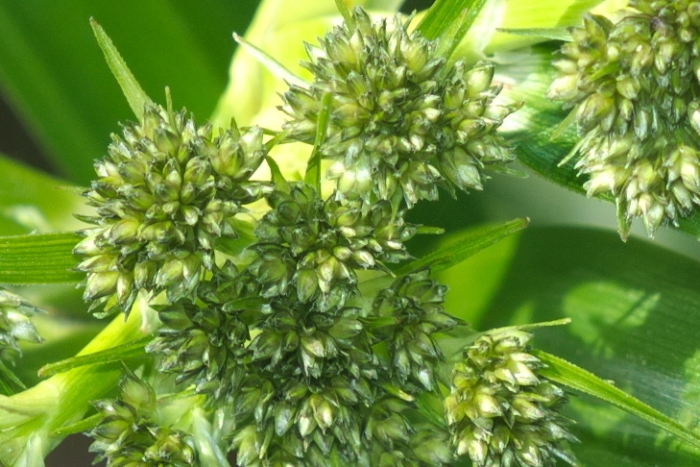Wood Clubrush
(Scirpus sylvaticus)
Wood Clubrush (Scirpus sylvaticus)
/
/

Daniel Linzbauer
CC BY 4.0
Image By:
Daniel Linzbauer
Recorded By:
Copyright:
CC BY 4.0
Copyright Notice:
Photo by: Daniel Linzbauer | License Type: CC BY 4.0 | License URL: http://creativecommons.org/licenses/by/4.0/ | Rights Holder: Daniel Linzbauer | Publisher: iNaturalist | Date Created: 2021-05-10T10:59:33-07:00 |

























Estimated Native Range
Summary
Scirpus sylvaticus, commonly known as wood clubrush, is a perennial herb in the sedge family, Cyperaceae, native to a wide range of wetland habitats including marshes, swamps, wet woodlands, and along the banks of rivers and streams across Eurasia. It is particularly prevalent in the European part of Russia and Southern Siberia. Wood clubrush typically reaches up to 3 feet in height and is characterized by its green, grass-like leaves and brownish flower spikes that appear in early to mid-summer. The plant forms dense clumps and spreads via rhizomes with associated tubers.
Wood clubrush is valued for its ability to stabilize soil and filter water in wetland restoration projects. It is also used ornamentally in water gardens and naturalized areas. This species thrives in full sun to part shade and prefers consistently moist to wet soils. It is relatively low-maintenance but may require management to prevent excessive spread in smaller garden settings. While it provides an important food source for waterfowl, with its seeds being consumed by birds and other animals such as muskrats, it can become invasive outside its native range and should be planted with caution.CC BY-SA 4.0
Wood clubrush is valued for its ability to stabilize soil and filter water in wetland restoration projects. It is also used ornamentally in water gardens and naturalized areas. This species thrives in full sun to part shade and prefers consistently moist to wet soils. It is relatively low-maintenance but may require management to prevent excessive spread in smaller garden settings. While it provides an important food source for waterfowl, with its seeds being consumed by birds and other animals such as muskrats, it can become invasive outside its native range and should be planted with caution.CC BY-SA 4.0
Plant Description
- Plant Type: Grass
- Height: 3-5 feet
- Width: 2-3 feet
- Growth Rate: Moderate
- Flower Color: N/A
- Flowering Season: Summer
- Leaf Retention: Evergreen
Growth Requirements
- Sun: Full Sun, Part Shade
- Water: High, Aquatic
- Drainage: Slow, Standing
Common Uses
Erosion Control, Low Maintenance, Water Garden
Natural Habitat
Native to wetland habitats including marshes, swamps, wet woodlands, and riverbanks across Eurasia
Other Names
Common Names: Woodland Bulrush
Scientific Names: , Scirpus sylvaticus, Cyperus sylvaticus, Nemocharis sylvatica, Schoenus sylvaticus, Scirpus gramineus, Scirpus latifolius, Scirpus sylvaticus f. angustifolius, Scirpus sylvaticus f. jungei, Scirpus sylvaticus subsp. digynus
GBIF Accepted Name: